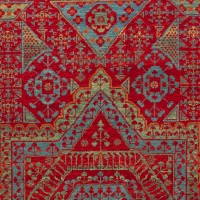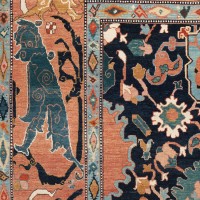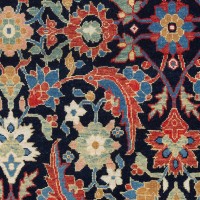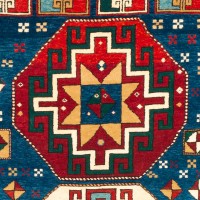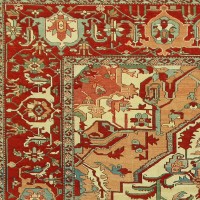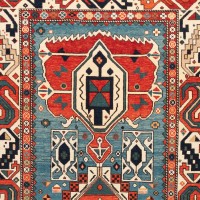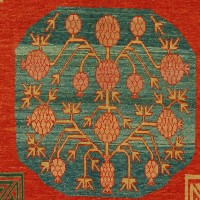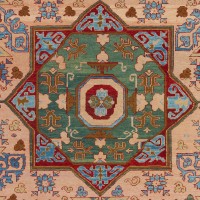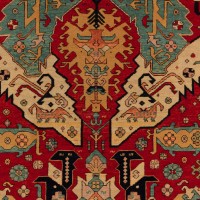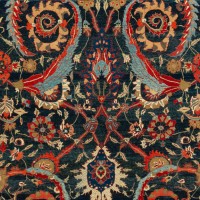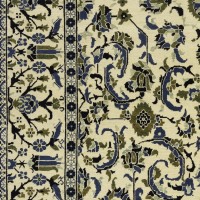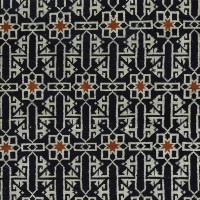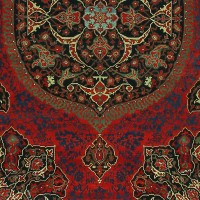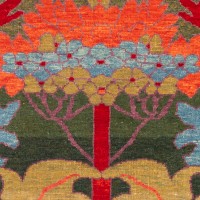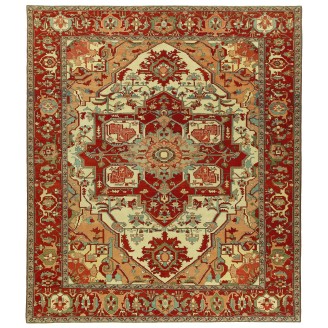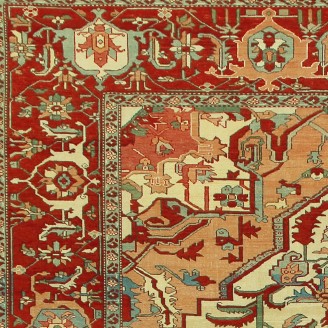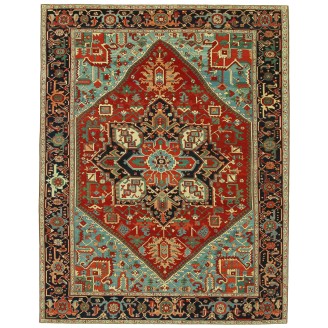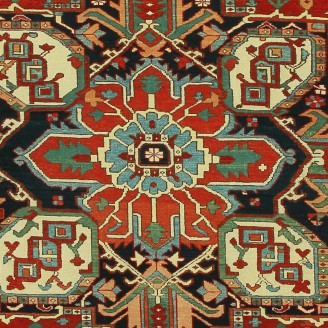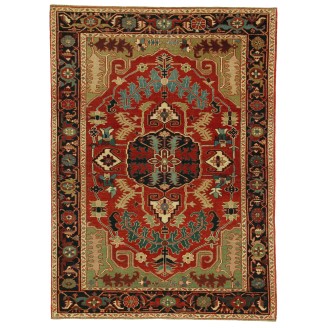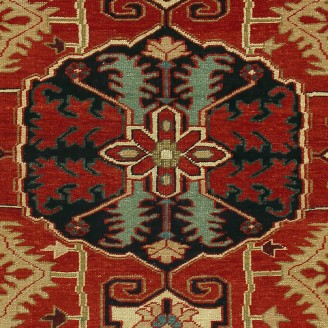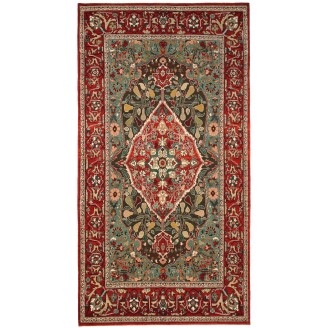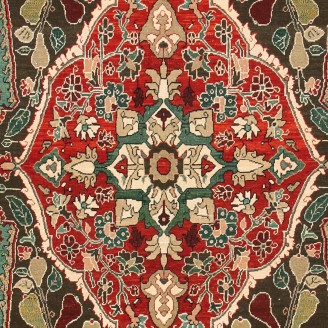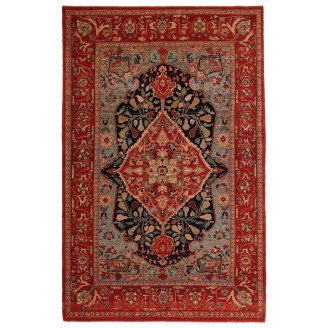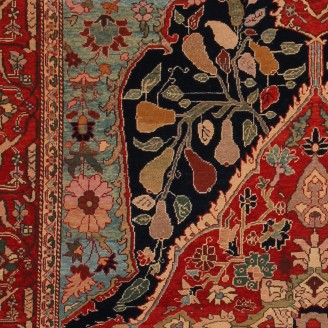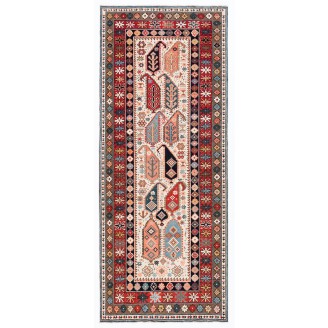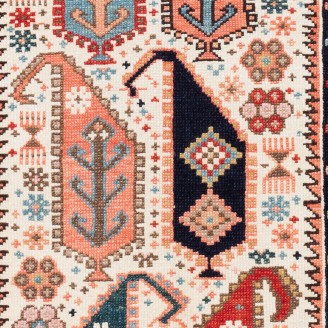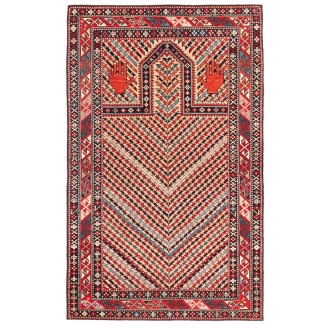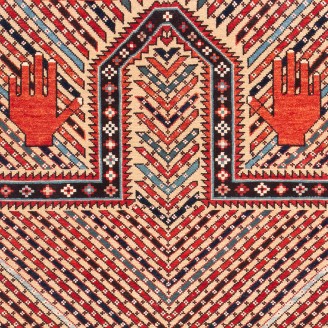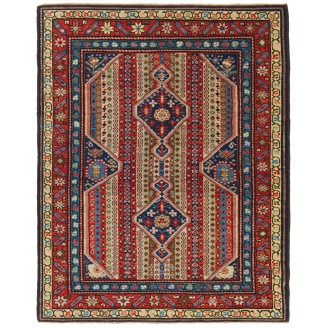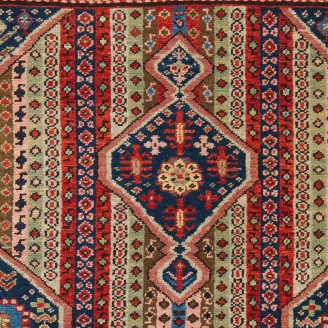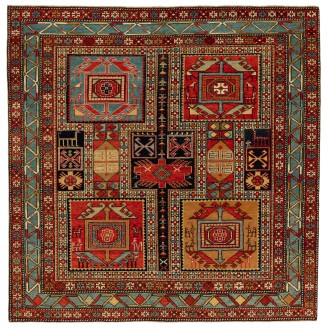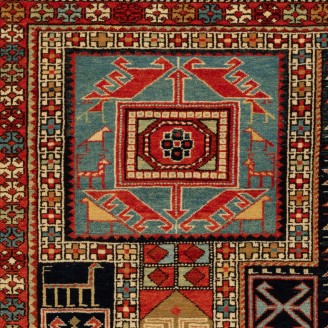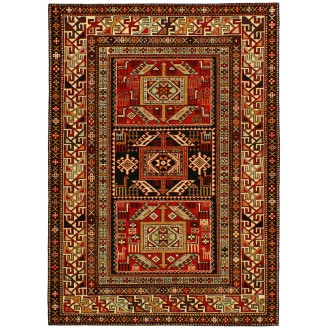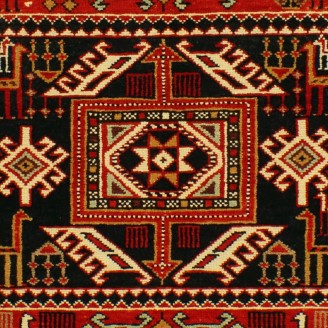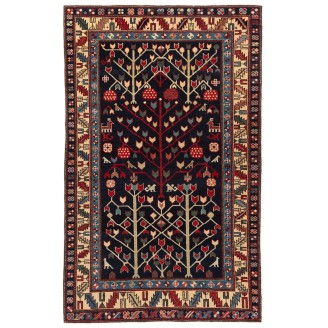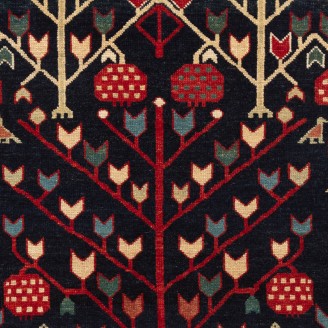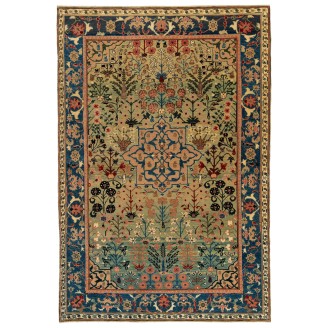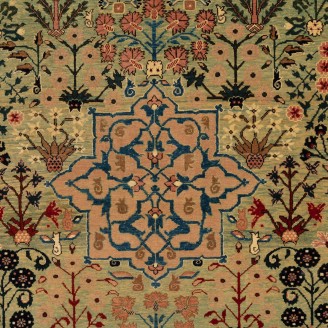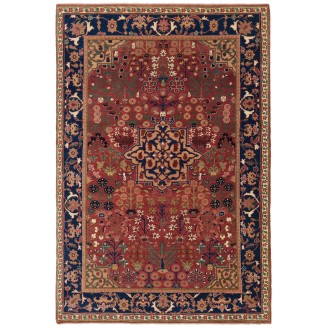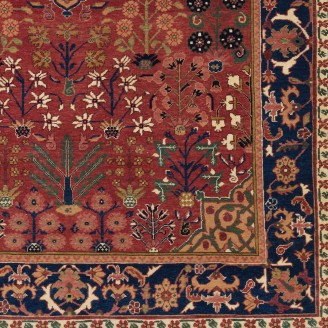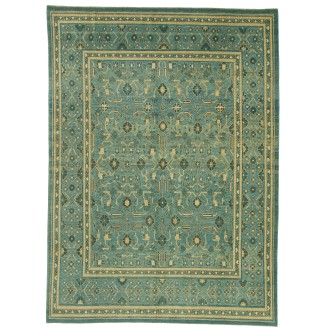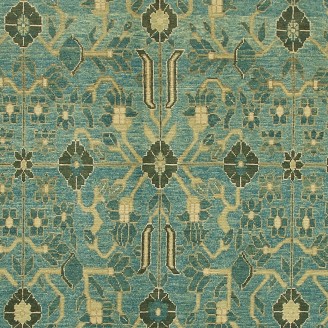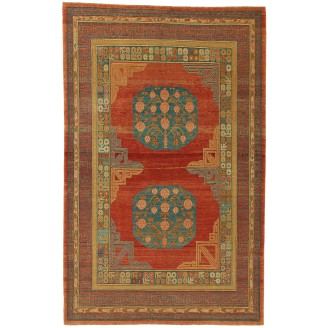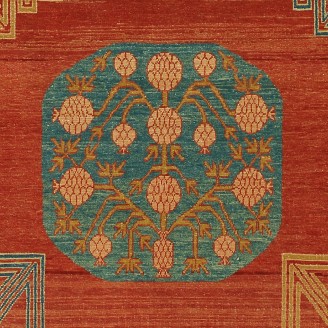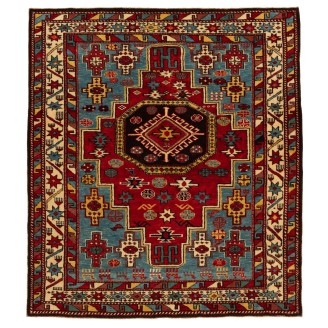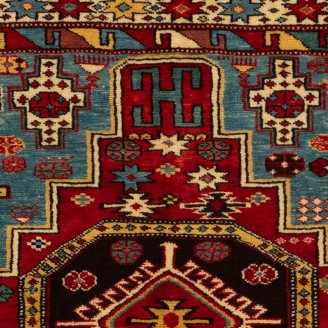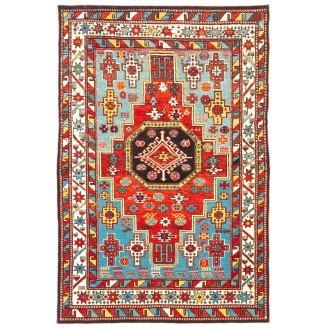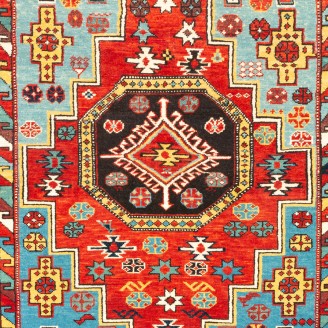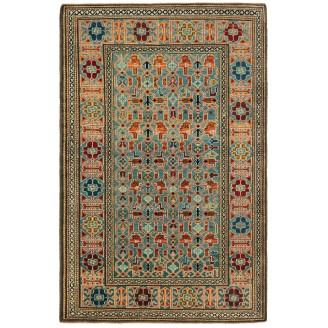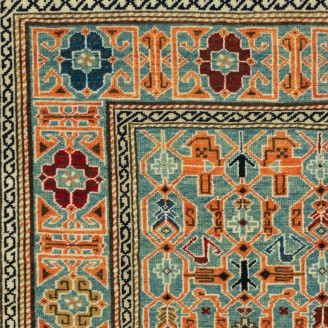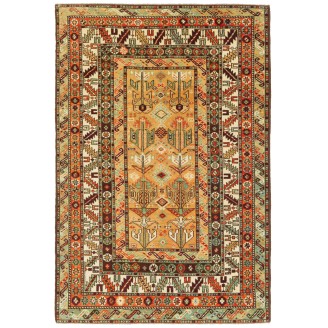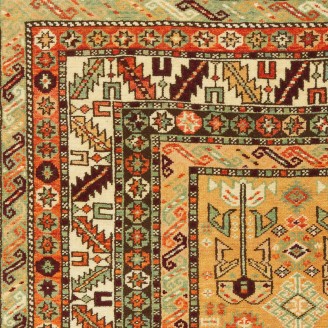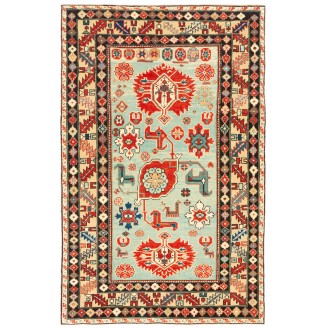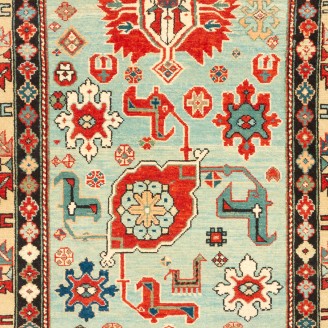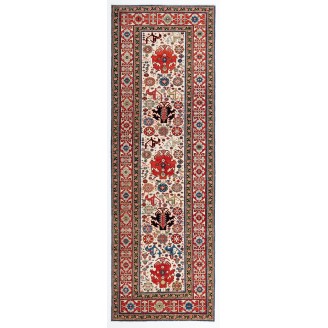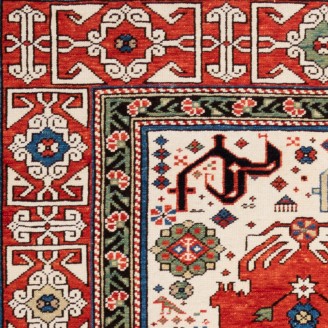Model: ARTW0007
Dimensions: 11'9" X 13'6"(360cm x 413cm)
This is a medallion design rug from the late 19th century, Heriz region, Northwest Persia area. Heriz ( Heris ) is a special Turkish knot weaving area of Persia, including many villages, located east of Tabriz in northwest Persia. Weaving has been carried on in the Heriz area certainly since the beg..
Price:
$0
Ex Tax:$0
Model: ARTW0008
Dimensions: 9'11" X 12'8"(304cm x 387cm)
This is a medallion design rug from the late 19th century, Heriz region, Northwest Persia area. Heriz ( Heris ) is a special Turkish knot weaving area of Persia, including many villages, located east of Tabriz in northwest Persia. Weaving has been carried on in the Heriz area certainly since the beg..
Price:
$0
Ex Tax:$0
Model: ARTW0002
Dimensions: 5'8" X 7'10"(175cm x 239cm)
This is a medallion design rug from the late 19th century, Heriz region, Northwest Persia area. Heriz ( Heris ) is a special Turkish knot weaving area of Persia, including many villages, located east of Tabriz in northwest Persia. Weaving has been carried on in the Heriz area certainly since the beg..
Price:
$0
Ex Tax:$0
Model: ART00015
Dimensions: 6'0" X 11'4"(183cm x 346cm)
This is a medallion design with the pear tree, flowers, and palmettes rug from the late 19th century, Heriz region, Northwest Persia area. Heriz ( Heris ) is a special Turkish knot weaving area of Persia, including many villages, located east of Tabriz in northwest Persia. Weaving has been carried o..
Price:
$10,900
Ex Tax:$10,900
Model: ART00352
Dimensions: 6'3" X 9'6"(191cm x 292cm)
This is a medallion design with the pear tree, flowers, and palmettes rug from the late 19th century, Heriz region, Northwest Persia area. Heriz ( Heris ) is a special Turkish knot weaving area of Persia, including many villages, located east of Tabriz in northwest Persia. Weaving has been carried o..
Price:
$10,400
Ex Tax:$10,400
Model: ARTK0026
Dimensions: 2'7" X 6'5"(81cm x 196cm)
The source of the rug comes from the book Oriental Rugs Volume 1 Caucasian, Ian Bennett, Oriental Textile Press, Aberdeen 1993, pg.114. This is a boteh rows design rug from the late 19th century, Karabagh Kazak region, Caucasus area. Rugs with diagonal rows of boteh can be found throughout the Cauca..
Price:
$0
Ex Tax:$0
Model: ART00024
Dimensions: 3'5" X 5'6"(106cm x 168cm)
The source of the rug comes from the book Oriental Rugs Volume 1 Caucasian, Ian Bennett, Oriental Textile Press, Aberdeen 1993, nr.110. A related example dated 1280 A.H. (A.D. 1863) is illustrated by Peter Bausback in his Antike Orientteppiche, 1978 (p. 215). This is a diagonal stripe prayer rug fro..
Price:
$4,500
Ex Tax:$4,500
Model: ART00462
Dimensions: 3'10" X 4'10"(118cm x 148cm)
The source of the rug comes from the book Tapis du Caucase - Rugs of the Caucasus, Ian Bennett & Aziz Bassoul, The Nicholas Sursock Museum, Beirut, Lebanon 2003, nr.35. This is a vertical stripe rug from the late 19th century, Karabagh region, Caucasus area. This rug shows in the field a design ..
Price:
$2,000
Ex Tax:$2,000
Model: ART00293
Dimensions: 4'9" X 4'9"(146cm x 145cm)
The source of the rug comes from the book Tapis du Caucase - Rugs of the Caucasus, Ian Bennett & Aziz Bassoul, The Nicholas Sursock Museum, Beirut, Lebanon 2003, nr.13 and Oriental Rugs Volume 1 Caucasian, Ian Bennett, Oriental Textile Press, Aberdeen 1993, pg.346 and Caucasian Carpets, E. Gans-Reud..
Price:
$3,500
Ex Tax:$3,500
Model: ARTK0032
Dimensions: 3'6" X 5'2"(107cm x 158cm)
The source of the rug comes from the book Tapis du Caucase - Rugs of the Caucasus, Ian Bennett & Aziz Bassoul, The Nicholas Sursock Museum, Beirut, Lebanon 2003, nr.13 and Oriental Rugs Volume 1 Caucasian, Ian Bennett, Oriental Textile Press, Aberdeen 1993, pg.346 and Caucasian Carpets, E. Gans-Reud..
Price:
$0
Ex Tax:$0
Model: ART00006
Dimensions: 3'8" X 5'10"(112cm x 178cm)
The source of the rug comes from the book Oriental Rugs Volume 1 Caucasian, Ian Bennett, Oriental Textile Press, Aberdeen 1993, pg.76. This is a garden with a tree design rug from the late 19th century, Kazak region, Caucasus area. This tree-shrub design is derived from 16th and 17th century Safavid..
Price:
$0
Ex Tax:$0
Model: ART00361
Dimensions: 4'10" X 7'2"(148cm x 220cm)
The source of carpet comes from the book How to Read - Islamic Carpets, Walter B. Denny, The Metropolitan Museum of Art, New York 2014 fig.18. This is a vase-technique with a stellate central medallion carpet design 17th century from Kerman region, Persia. The design of the carpet shows a vigorous c..
Price:
$6,000
Ex Tax:$6,000
Model: ART00443
Dimensions: 4'11" X 7'3"(150cm x 221cm)
The source of the carpet comes from the book How to Read - Islamic Carpets, Walter B. Denny, The Metropolitan Museum of Art, New York 2014 fig.18. This is a vase-technique with a stellate central medallion carpet design 17th century from Kerman region, Persia. The design of the carpet shows a vigoro..
Price:
$7,000
Ex Tax:$7,000
Model: ARTW0013
Dimensions: 8'0" X 10'9"(244cm x 330cm)
The source of carpet comes from the book Great Carpets of the World, Susan Day, Thames and Hudson, 1996, fig.359. This is a carpet with a flower-lattice pattern derived from Persia, India, and China designed in the late 18th century Kashgar or Khotan region, eastern Turkestan, Central Asia area. 'Ce..
Price:
$0
Ex Tax:$0
Model: ARTW0015
Dimensions: 6'3" X 10'0"(193cm x 305cm)
The source of the rug comes from the book Hali Magazine 2014 Issue 181 pg.90. This is a pomegranate tree medallion design ( Double Square Khotan ) rug from the 18th century in the Tarim Basim region, Central Asia area. This pattern has been linked to the tree of life symbol, which is not inconceivab..
Price:
$0
Ex Tax:$0
Model: ART00050
Dimensions: 3'4" X 3'10"(104cm x 117cm)
The source of the rug comes from the book Caucasian Carpets, E. Gans-Reudin, Thames and Hudson, Switzerland 1986, pg.276. This is a Konagkend-type rug from the late 19th century in the Kuba region, Caucasus. There are three principal designs for rugs attributed to Konagkend ( Konakkent or Konakhend ..
Price:
$1,900
Ex Tax:$1,900
Model: ART00358
Dimensions: 3'3" X 4'11"(100cm x 150cm)
The source of the rug comes from the book Caucasian Carpets, E. Gans-Reudin, Thames and Hudson, Switzerland 1986, pg.276. This is a Konagkend-type rug from the late 19th century in the Kuba region, Caucasus. There are three principal designs for rugs attributed to Konagkend ( Konakkent or Konakhend ..
Price:
$2,500
Ex Tax:$2,500
Model: ART00579
Dimensions: 3'11" X 6'0"(120cm x 183cm)
The design source of the rug comes from the book How to Read - Islamic Carpets, Walter B. Denny, The Metropolitan Museum of Art, New York 2014 fig.87. This is a domestic carpet, village, and nomadic weaving in the late 19th century in the Shirvan region, Caucasus. There are three principal designs f..
Price:
$2,650
Ex Tax:$2,650
Model: ART00439
Dimensions: 3'11" X 5'8"(120cm x 174cm)
The source of the rug comes from the book Oriental Rugs Volume 1 Caucasian, Ian Bennett, Oriental Textile Press, Aberdeen 1993, nr.313. This is a vertical row of 'open' shield-like palmettes design rug from the late 19th century, Kuba region, Caucasus area. A group of pieces attributed to Gendje whi..
Price:
$2,500
Ex Tax:$2,500
Model: ART00357
Dimensions: 3'4" X 5'2"(103cm x 160cm)
The source of the rug comes from the book Oriental Rugs Volume 1 Caucasian, Ian Bennett, Oriental Textile Press, Aberdeen 1993, pg.247. This is a Harshang design rug with palmettes from the early 19th century, Kuba region, Caucasus area. This is a stylized interpreted version of the Caucasian 'split..
Price:
$2,700
Ex Tax:$2,700
Model: ARTK0025
Dimensions: 3'2" X 9'8"(99cm x 297cm)
The source of the rug comes from the book Oriental Rugs Volume 1 Caucasian, Ian Bennett, Oriental Textile Press, Aberdeen 1993, pg.247. This is a Harshang design rug with palmettes from the early 19th century, Kuba region, Caucasus area. This is a stylized version of the Caucasian 'split-palmettes' ..
Price:
$0
Ex Tax:$0
